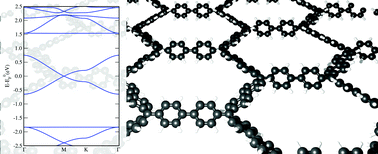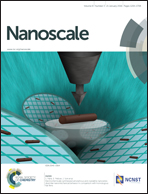The electronic and transport properties of two-dimensional conjugated polymer networks including disorder†
Abstract
Two-dimensional (2D) conjugated polymers exhibit electronic structures analogous to that of graphene with the peculiarity of π–π* bands which are fully symmetric and isolated. In the present letter, the suitability of these materials for electronic applications is analyzed and discussed. In particular, realistic 2D conjugated polymer networks with a structural disorder such as monomer vacancies are investigated. Indeed, during bottom-up synthesis, these irregularities are unavoidable and their impact on the electronic properties is investigated using both ab initio and tight-binding techniques. The tight-binding model is combined with a real space Kubo–Greenwood approach for the prediction of transport characteristics for monomer vacancy concentrations ranging from 0.5% to 2%. As expected, long mean free paths and high mobilities are predicted for low defect densities. At low temperatures and for high defect densities, strong localization phenomena originating from quantum interferences of multiple scattering paths are observed in the close vicinity of the Dirac energy region while the absence of localization effects is predicted away from this region suggesting a sharp mobility transition. These predictions show that 2D conjugated polymer networks are good candidates to pave the way for the ultimate scaling and performances of future molecular nanoelectronic devices.



 Please wait while we load your content...
Please wait while we load your content...